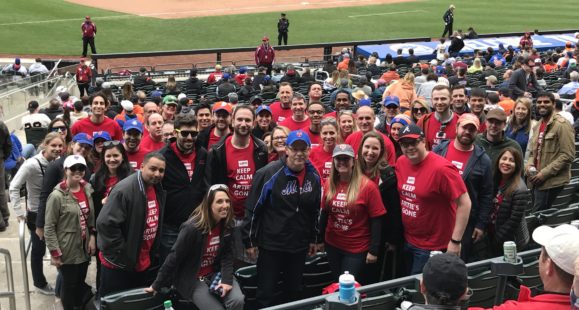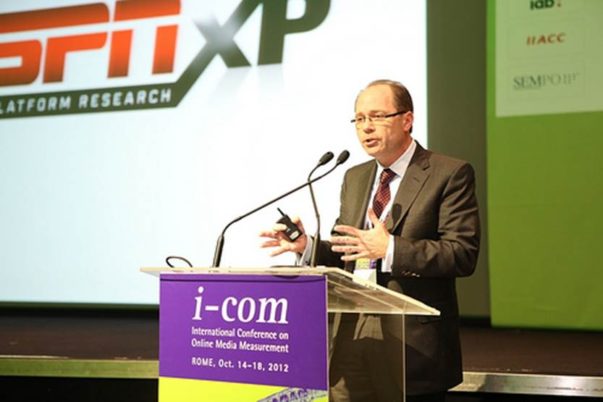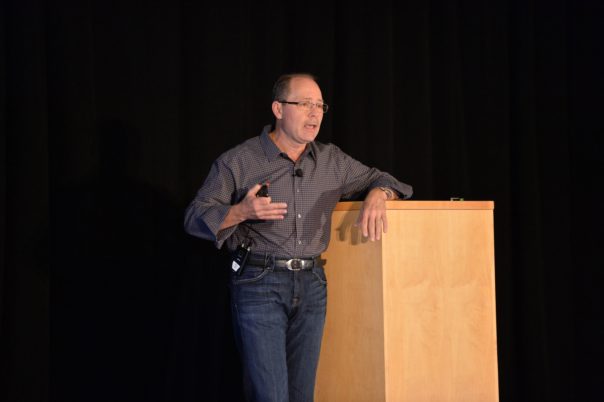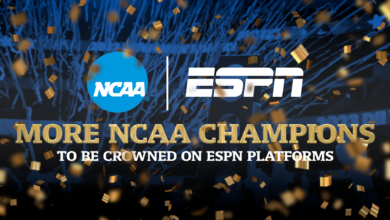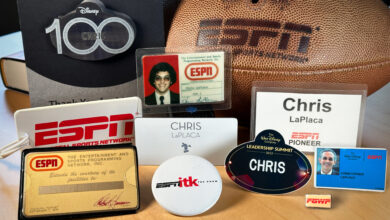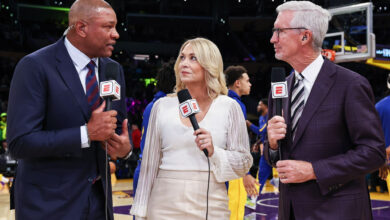Research guru Artie Bulgrin retires, reflects on the changed industry, ESPN’s strengths
EDITOR’S NOTE: Friday, May 26, SVP, Fan and Media Intelligence, Artie Bulgrin retires from ESPN after 21 years here and a career devoted to audience measurement. One of the foremost authorities and respected voices in audience measurement, Artie previously worked at both Nielsen and ABC. Here, he reflects on his career, the changes in the industry, the growth of his department and its critical role, and ESPN’s enduring strengths in the ever-more competitive industry.
I joined ESPN 21 years ago, from Capital Cities/ABC which had just merged with The Walt Disney Company. It was a significant change of business culture for me. ABC was a traditional broadcast TV network with predictable business cycles. ESPN was the pioneering sports cable network in the process of expanding its brand — anything but predictable and there was just one speed: very fast!
Think way back to 1996: ESPN had just passed 70 million subscribers while ESPN2 hit 40 million and became the fastest-growing cable network of the ‘90s. Later that year, ESPNEWS launched, and so the ESPN Club at Walt Disney World opened. Seems like a lifetime ago – or just the other day!
In the current maelstrom of “hot takes” and semi-informed analysis of the television industry, Artie says “keep calm” and focus on ESPN’s strengths.
- In today’s on-demand environment, sports is gaining a larger share of live viewing especially in prime time – up 54 percent among Millennials in the last five years.
- The opportunity to see ESPN on DMVPD/MVPD streaming platforms is growing fast, increasing the traditional TV audience, especially among Millennial men: up 7 percent year-to-date (total day).
- It took us 20 years, but we are finally capturing the out-of-home audience through Nielsen. While it has always been there, it is now measured, meaningful and monetizable — increasing our total in-home audience by 9 percent in Q1.
When I arrived, I had a staff of one. But I was blessed and enthused. Essentially I was given the unique and privileged opportunity to build a research organization to support what would become one of the most valuable media brands in history. What made ESPN unique was its brand-driven culture which turned out to be the company’s most powerful attribute, and it still is today.
The research staff grew over time as we expanded with the company and proved our value in many areas. At ABC, we focused on the size of the TV audience. Once at ESPN, in addition to that, I turned our attention to measuring the strength of our brand and proving subscriber value to grow affiliate revenue. As our subs grew, so did our audience, which was young, affluent and loyal – an important message for advertisers.
But we did face some significant challenges. One of the most noteworthy was when TV ratings hit an all-time low in 2001. In response, research collaborated with programming and production to use audience insights to create a new programming strategy. The result was a focus on engaging content and the birth of shows like PTI, Around the Horn, and Cold Pizza (now First Take).
That approach – along with acquiring the NBA in 2002 – started a ratings growth trend the impact of which we still benefit from today. ESPN’s standing among cable networks has never been higher. Also, the equity we built among our fans in those four letters buttresses every new product and platform we debut.
That success proved to us that we could do anything if we used insights to inspire change and drive innovation. Today the research and analytics team is known as Fan & Media Intelligence — a group of about 60 people worldwide of which I am extremely proud.
Over these 21 years, this team has developed a reputation as thought leaders in media research. Our insight has inspired ESPN’s mission statement “to serve sports fans, anytime and anywhere,” and established guiding principles such as “Best Available Screen.” Our ESPN Brand Health program has helped keep the brand strong while innovations such as the ESPN Lab and our pioneering ESPN XP cross-platform measurement initiative have made ESPN and our clients smarter.
Today, ESPN is as ubiquitous as ever — a multi-platform brand that reaches more than 200 million people each month. The business environment has become more challenging with changes in technology and challengers seeking to replicate our success, but I am confident that the ESPN brand – bolstered by the collaborative and forward-looking culture behind it – will prevail.
I want to thank ESPN for the opportunity to be part of an amazing organization and play a small role in the growth of such an amazing brand – a brand that has a great future.
ESPN research guru Artie Bulgrin is leaving. But first…cookies! pic.twitter.com/CYo7ug9dMU
— Amy Phillips (@Amy_ESPNPR) May 25, 2017

